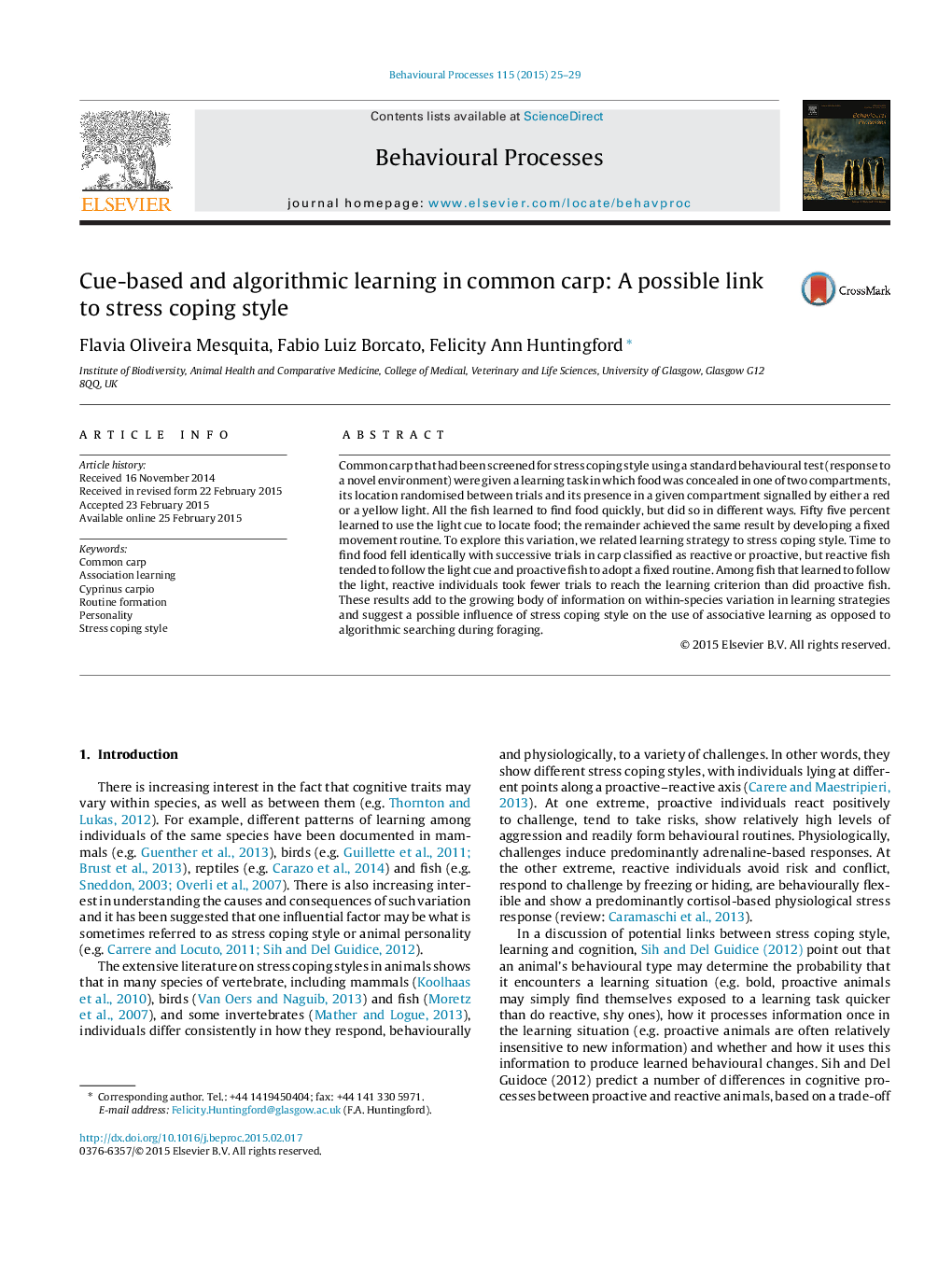| Article ID | Journal | Published Year | Pages | File Type |
|---|---|---|---|---|
| 2426586 | Behavioural Processes | 2015 | 5 Pages |
•Carp solved a spatial task using one of two distinct, equally efficient, learning strategies.•55% used a visual cue to find hidden food; the rest used a simple behavioural algorithm.•Learning strategy was related to individual stress coping style, or personality.•Proactive fish tended to use algorithmic searching; most reactive fish learned to follow the cue.•The minority of proactive fish that learned to use the cue was slower to do so than reactive fish.
Common carp that had been screened for stress coping style using a standard behavioural test (response to a novel environment) were given a learning task in which food was concealed in one of two compartments, its location randomised between trials and its presence in a given compartment signalled by either a red or a yellow light. All the fish learned to find food quickly, but did so in different ways. Fifty five percent learned to use the light cue to locate food; the remainder achieved the same result by developing a fixed movement routine. To explore this variation, we related learning strategy to stress coping style. Time to find food fell identically with successive trials in carp classified as reactive or proactive, but reactive fish tended to follow the light cue and proactive fish to adopt a fixed routine. Among fish that learned to follow the light, reactive individuals took fewer trials to reach the learning criterion than did proactive fish. These results add to the growing body of information on within-species variation in learning strategies and suggest a possible influence of stress coping style on the use of associative learning as opposed to algorithmic searching during foraging.
